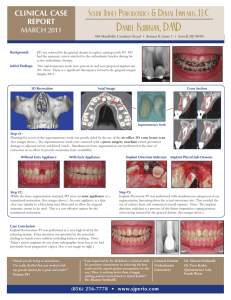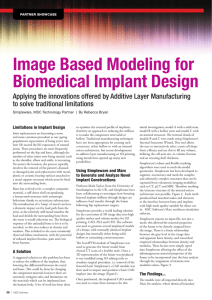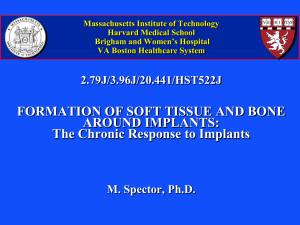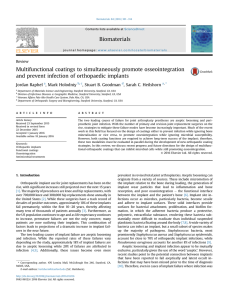Babylon University / College of Materials Engineering
advertisement
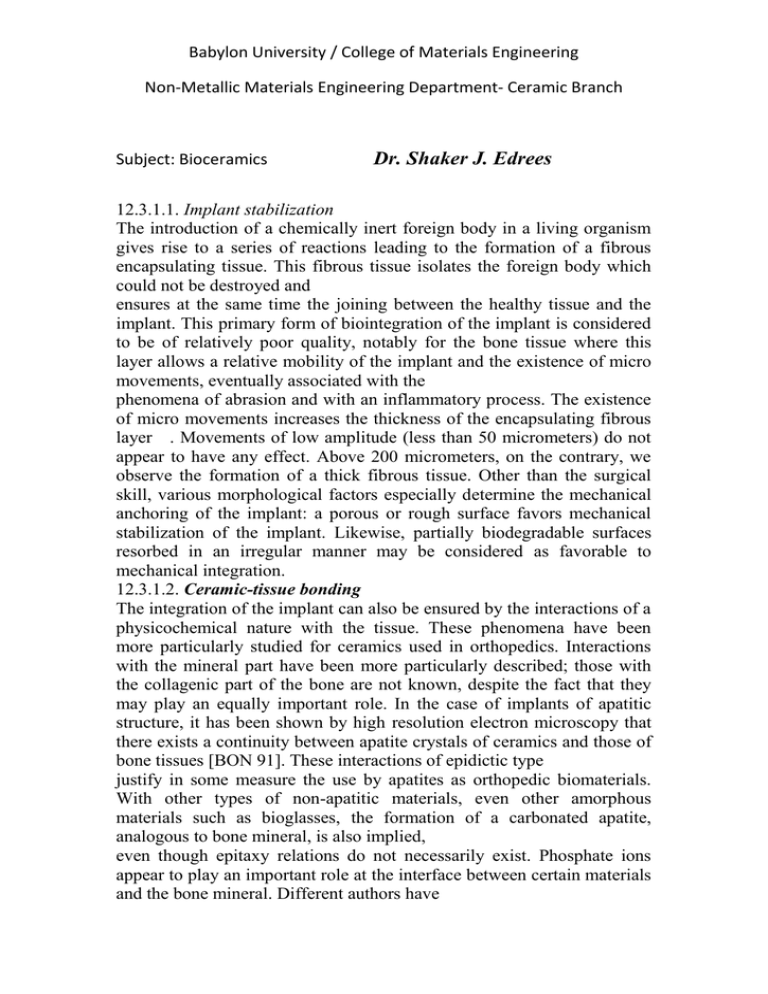
Babylon University / College of Materials Engineering Non-Metallic Materials Engineering Department- Ceramic Branch Subject: Bioceramics Dr. Shaker J. Edrees 12.3.1.1. Implant stabilization The introduction of a chemically inert foreign body in a living organism gives rise to a series of reactions leading to the formation of a fibrous encapsulating tissue. This fibrous tissue isolates the foreign body which could not be destroyed and ensures at the same time the joining between the healthy tissue and the implant. This primary form of biointegration of the implant is considered to be of relatively poor quality, notably for the bone tissue where this layer allows a relative mobility of the implant and the existence of micro movements, eventually associated with the phenomena of abrasion and with an inflammatory process. The existence of micro movements increases the thickness of the encapsulating fibrous layer . Movements of low amplitude (less than 50 micrometers) do not appear to have any effect. Above 200 micrometers, on the contrary, we observe the formation of a thick fibrous tissue. Other than the surgical skill, various morphological factors especially determine the mechanical anchoring of the implant: a porous or rough surface favors mechanical stabilization of the implant. Likewise, partially biodegradable surfaces resorbed in an irregular manner may be considered as favorable to mechanical integration. 12.3.1.2. Ceramic-tissue bonding The integration of the implant can also be ensured by the interactions of a physicochemical nature with the tissue. These phenomena have been more particularly studied for ceramics used in orthopedics. Interactions with the mineral part have been more particularly described; those with the collagenic part of the bone are not known, despite the fact that they may play an equally important role. In the case of implants of apatitic structure, it has been shown by high resolution electron microscopy that there exists a continuity between apatite crystals of ceramics and those of bone tissues [BON 91]. These interactions of epidictic type justify in some measure the use by apatites as orthopedic biomaterials. With other types of non-apatitic materials, even other amorphous materials such as bioglasses, the formation of a carbonated apatite, analogous to bone mineral, is also implied, even though epitaxy relations do not necessarily exist. Phosphate ions appear to play an important role at the interface between certain materials and the bone mineral. Different authors have Babylon University / College of Materials Engineering Non-Metallic Materials Engineering Department- Ceramic Branch Subject: Bioceramics Dr. Shaker J. Edrees ceramics and the bone is among the strongest, and is generally the line of fracture is situated in the bone tissue and not at the bone-implant interface. An exception that remains generally unexplained is the Bioglass-bone bonding. The interactions with organic matrix, as well as the possibility of having locally weaker but greater number of bonds, have been suggested. The type of interaction involved is in fact highly dependent on the number of crystals in direct contact with the biomaterial. But the methods of nucleation of these crystals can be affected by a number of factors associated with the implanted biomaterials (nucleation sites) and its environment (protein adsorption for example). 12.3.1.3. Mechanical stresses Cell activity, of the bone tissue in particular, is closely connected to mechanical stimuli. This effect is now well established, based on observations that in the absence of mechanical stress the remodeling of bones tends to slow down. The implant integration in the bone tissue depends also on biomechanical factors. Besides, since the Young’s modulus of ceramics is generally much higher than that of the bone tissue, the implant can cause mechanical stresses at the bone interface. Moreover, it produces a modification of the lines of force (stress shielding) which can result in bone defects close to the implant. This phenomenon is sometimes visible in x-rays and manifests itself by a diminution of the bone density near the implant related to the lack of mechanical stimulation of the tissue.


